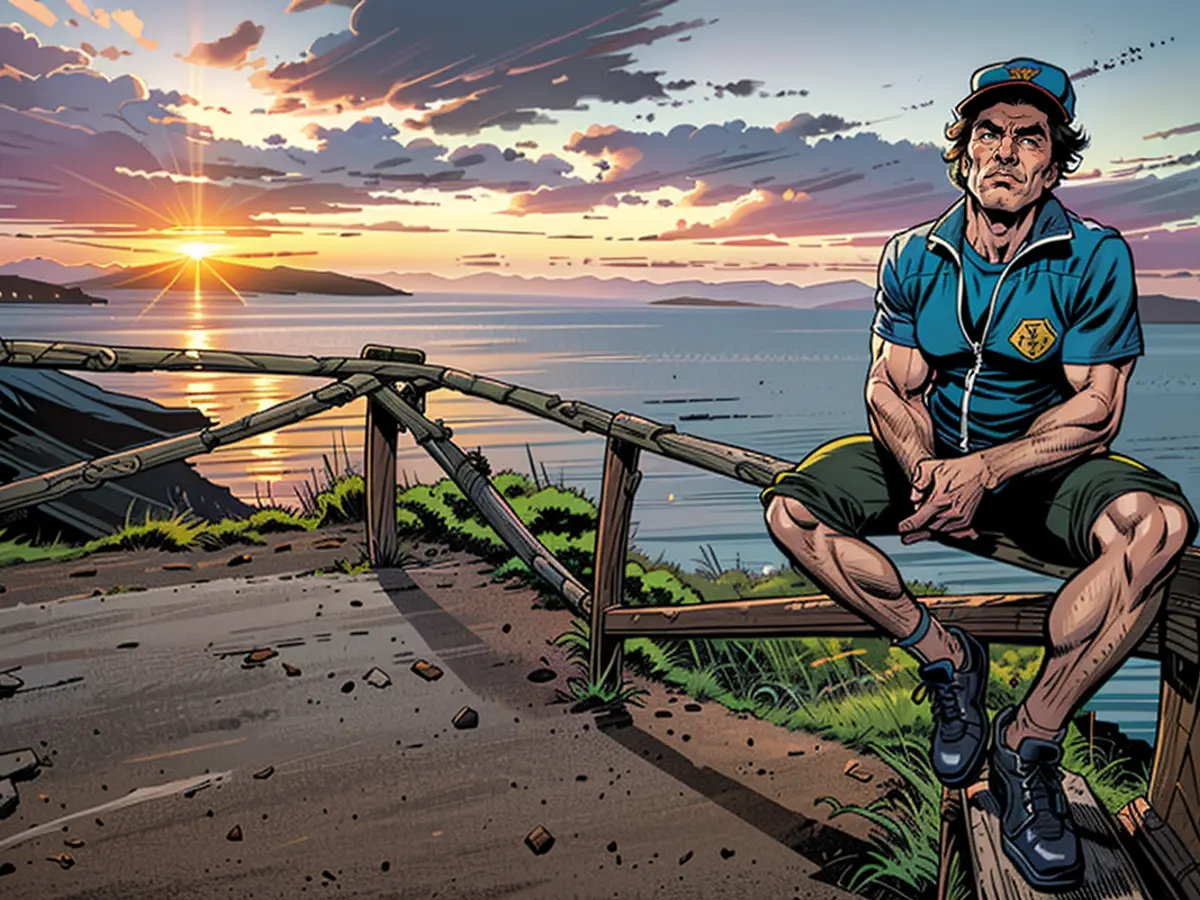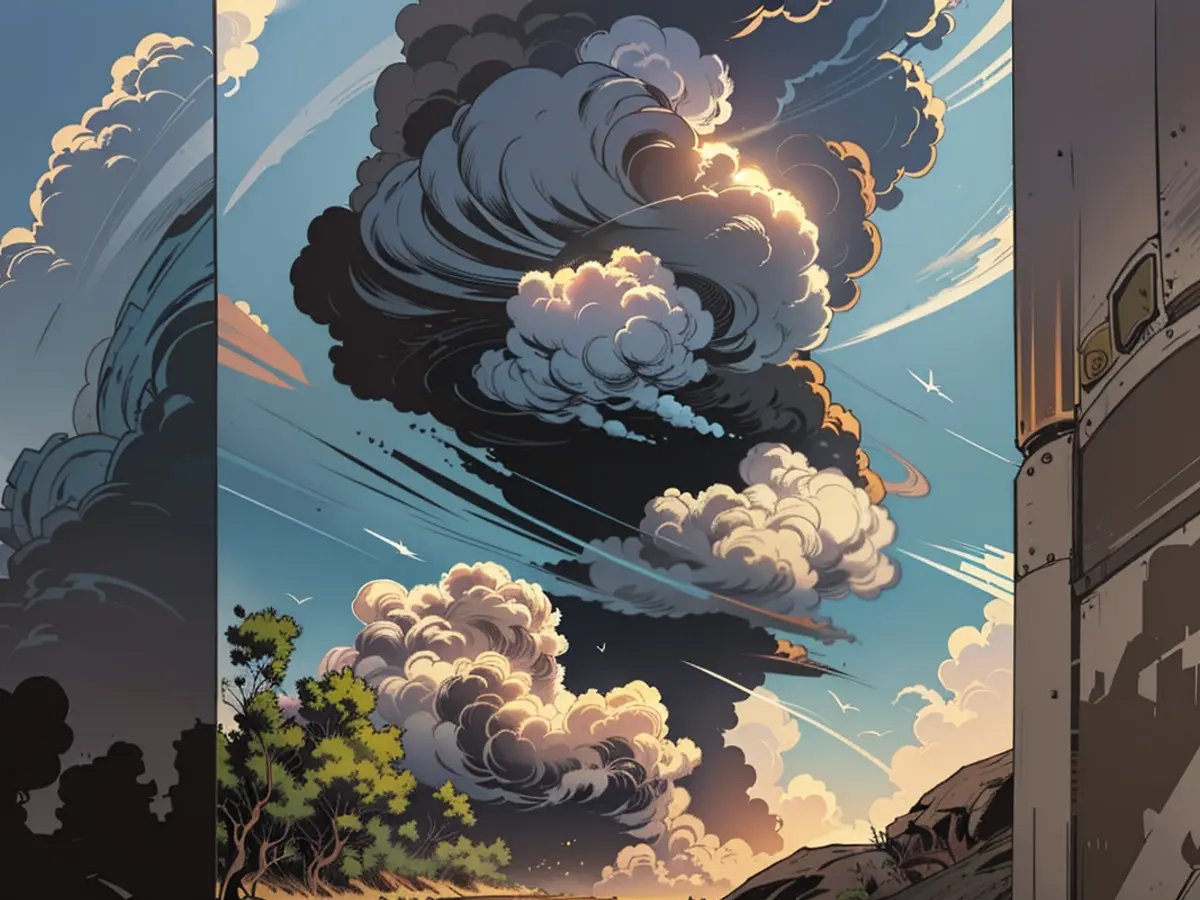Vulkan - Alert Level Red: Geologist explains why Stromboli is so dangerous
For weeks, Stromboli has been spitting more intensely, now even sending ash clouds up to five kilometers high. This constant burner is a challenge for visitors and volcanologists alike. The 900-meter-tall volcano on the namesake island off Sicily spews out lava fragments, rocks, and ash into the air almost every minute through numerous small explosions. This pattern makes Stromboli highly attractive for hikers, photo tourists, and scientists, earning it the designation "strombolian" by volcanologists for these persistent eruptions.
The conditions for its explosiveness are the combination of relatively fluid lava in its crater and gas bubbles that struggle to rise but then burst forcefully at the surface, spraying the lava into the air. A recent study revealed that the Stromboli lava is so fluid because of metals like Titan and Iron present in it, which accelerate the formation of crystals.
Stromboli is unpredictable and hard to calculate
Simultaneously, the mountain is a very "spontaneous" volcano and hard to predict: Its activity level fluctuates from day to day, so tourists planning to visit with ferries from Naples or Sicily must always calculate the possibility of their visit being suddenly canceled.
Even now, the mountain is once again completely closed, as Adriano Di Pietro reports. The trained geologist and geophysicist hails from Sicily and has lived on Stromboli for seven years. He is one of the few officially licensed volcano guides on the island. Since the major eruptions in 2003 and 2007, the volcano can only be climbed with such authorized guides. Di Pietro led tourists to the volcano just a few days ago for the company "Magmatrek."
The summit has been off-limits for years
"The monitoring equipment here has been registering increased activity for the past two weeks," Di Pietro explains. The Stromboli was spitting lava or flowing over its slope, earthquakes and explosions were occurring. The authorities had therefore raised the volcanic warning level from "yellow" to "orange." "I could only take my guests up to 290 meters above sea level on the mountain. Normally, it's 400 meters, which is about half the height of the volcano," says Di Pietro. The summit itself with several craters has been off-limits since a larger explosion in 2019, during which a tourist lost their life.
On July 4th, around 16:30 PM, there were several landslides on the volcano's slope, and the concern for a tsunami grew. "Additionally, openings formed from which lava flows emerged. People were advised to leave the beach and find a safe place," Di Pietro reports. Around midnight, the volcano released thick, black smoke.
Ferries cannot dock on Stromboli
The authorities raised the alarm level further to "red" and closed the entire mountain, effectively the entire island: Even ferries with tourists are currently not allowed to dock. Experts and the Italian Civil Defense are on Stromboli to monitor the situation. Since the Stromboli not only lets lava flow but also ash and glowing fragments into the air, there is a risk that hot rocks may fall on hiking trails. The authorities also feared "pyroclastic flows": rapidly moving streams of hot gases, rocks, and ash, from which people would have little chance of escape.
This actually happened: The Stromboli volcano, as a preliminary peak of its fiery display, shot a column-like ash cloud at least 5 kilometers high into the sky on July 11th. Heavier rocks, ash, and hot gases rushed down the slope at breakneck speed, reaching the sea. Fortunately, no one was harmed.
"It concerns some of the guests"
The two villages on the island – the main town of Stromboli in the northeast and the smaller Ginostra in the southwest – are usually spared by the volcano's output: Lava and rocks typically slide over the northwestern flank of Stromboli into the sea, the "Sciara del Fuoco" – the "Lava Chutes." However, during a major eruption in 1930, rocks rained down on the settlements, a lava flow found its way through a gully to San Bartolo, a part of Stromboli. Boats burned in the harbor, the seawater began to boil, and six people died. At that time, many islanders left the area, and Stromboli remained almost deserted – until residents and tourists gradually returned.
However, volcanic tourism on the island is still affected by uncertainties, as Adriano Di Pietro, a guide, explained. "Nobody can predict how long the current pause on Stromboli will last. During similar events in the past, the increased volcanic activity has halted for weeks or even months. The people on the island are not particularly worried about this, they are used to it. But it concerns some of the guests."
Active Volcanoes: Etna is spitting again
Activity also surrounds Stromboli. The mountain is part of a larger geologically active region in Southern Italy between the Gulf of Naples and Sicily: Here, a fragment of the African Plate is pushing under the European Plate, resulting in faults and folds in the Earth's crust, and, as a consequence, earthquakes and volcanic eruptions. Currently, Etna on Sicily and the area around Naples with Vesuvius are also active. And west of Naples lies the Phlegraean Fields, a 200 square kilometer large volcanic field, beneath which lies a massive magma chamber. Geologists predict that there will eventually be a massive explosion, which could affect the entire Neapolitan region. The first signs of this were felt in May with an earthquake of magnitude 4.4 in Naples. The epicenters of the latest earthquakes are also moving closer to the metropolitan area.
However, not all volcanic activities in the region need to be directly related, explained geologist Adriano Di Pietro. "The fact that the Etna is also active could be a coincidence. The two volcanic systems are quite far from each other and are not geologically connected." A general increase in volcanic activity in Italy is not noticeable, despite the recent events: "I am just going through phases of stronger and weaker activity."
This text is an updated version of an earlier one from July 5, 2024.
Despite its volatile nature, Stromboli attracts hikers, photographers, and scientists with its persistent strombolian eruptions. These constant explosions are fueled by the combination of fluid lava and gas bubbles in the crater.
Meanwhile, Etna, another active volcano in the region, is also showing signs of activity. This is not necessarily a direct link, as Etna and Stromboli are geographically separate and have different volcanic systems.








